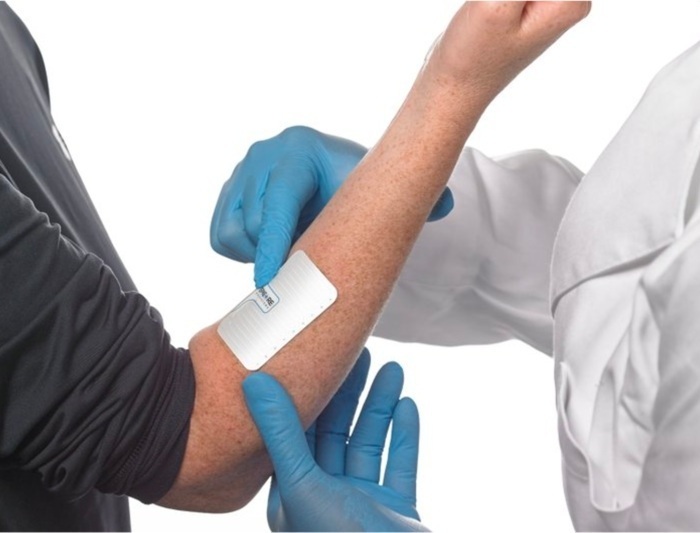New Test Accurately Detects Latent HIV
|
By LabMedica International staff writers Posted on 14 Jun 2017 |
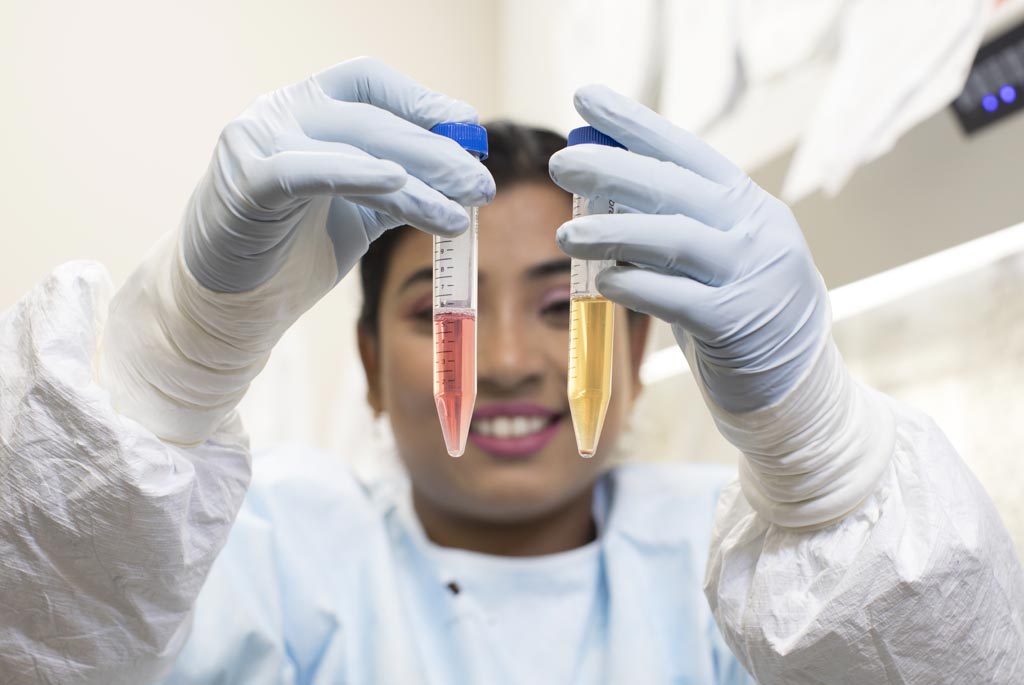
Image: Anwesha Sanyal, PhD, indicates HIV-infected cells collecting at the bottom of a test tube being prepared for the TZA test. The yellow color indicates the stimulated (Photo courtesy of the University of Pittsburgh).
The ability of the human immunodeficiency virus (HIV) to lie dormant in a "reservoir" of CD4 cells has been the main obstacle to finding a cure; once a patient starts antiretroviral therapy, it becomes very important to measure the level of viremia, and whether the virus can replicate.
Most tests available for detecting the virus are not very cost effective and take a lot of time. The most widely available test at the moment is the "quantitative viral outgrowth assay" (Q-VOA), but it requires large amounts of blood, is very labor intensive, and is quite expensive and additionally, the Q-VOA may also underestimate the amount of virus left.
Scientists at the University of Pittsburgh (PA, USA) and their colleagues developed a sensitive assay that can accurately and rapidly quantify inducible, replication-competent latent HIV-1 from resting CD4+ T cells, which is essential for HIV-1 eradication studies. The developed test is called TZA and it works by detecting a gene that is turned on only when replicating HIV is present, thereby flagging the virus for technicians to quantify.
The TZA test produces results in one week compared to the two weeks needed using the Q-VOA, and at a third of the cost. The TZA test also may be useful for quantification of replication-competent HIV-1 in the pediatric population, because of its low cell requirement, as well as in the lymph nodes and tissues where the virus persists. The assay has several advantages over existing technology in that it is sensitive; requires only a small blood volume; is faster, less labor intensive, and less expensive; and can be readily adapted into a high-throughput format. Using this assay, the authors show that the size of the inducible latent HIV-1 reservoir in aviremic participants on therapy is approximately 70-fold larger than previous estimates.
Phalguni Gupta, PhD, a professor and senior author of the study, said, “Using this test, we demonstrated that asymptomatic patients on antiretroviral therapy carry a much larger HIV reservoir than previous estimates, as much as 70 times what the Q-VOA test was detecting. Because these tests have different ways to measure HIV that is capable of replicating, it is likely beneficial to have both available as scientists strive toward a cure." The study was published on May 29, 2017, in the journal Nature Medicine.
Related Links:
University of Pittsburgh
Most tests available for detecting the virus are not very cost effective and take a lot of time. The most widely available test at the moment is the "quantitative viral outgrowth assay" (Q-VOA), but it requires large amounts of blood, is very labor intensive, and is quite expensive and additionally, the Q-VOA may also underestimate the amount of virus left.
Scientists at the University of Pittsburgh (PA, USA) and their colleagues developed a sensitive assay that can accurately and rapidly quantify inducible, replication-competent latent HIV-1 from resting CD4+ T cells, which is essential for HIV-1 eradication studies. The developed test is called TZA and it works by detecting a gene that is turned on only when replicating HIV is present, thereby flagging the virus for technicians to quantify.
The TZA test produces results in one week compared to the two weeks needed using the Q-VOA, and at a third of the cost. The TZA test also may be useful for quantification of replication-competent HIV-1 in the pediatric population, because of its low cell requirement, as well as in the lymph nodes and tissues where the virus persists. The assay has several advantages over existing technology in that it is sensitive; requires only a small blood volume; is faster, less labor intensive, and less expensive; and can be readily adapted into a high-throughput format. Using this assay, the authors show that the size of the inducible latent HIV-1 reservoir in aviremic participants on therapy is approximately 70-fold larger than previous estimates.
Phalguni Gupta, PhD, a professor and senior author of the study, said, “Using this test, we demonstrated that asymptomatic patients on antiretroviral therapy carry a much larger HIV reservoir than previous estimates, as much as 70 times what the Q-VOA test was detecting. Because these tests have different ways to measure HIV that is capable of replicating, it is likely beneficial to have both available as scientists strive toward a cure." The study was published on May 29, 2017, in the journal Nature Medicine.
Related Links:
University of Pittsburgh
Latest Microbiology News
- Microfluidic Platform Assesses Neutrophil Function in Sepsis Patients
- New Diagnostic Method Confirms Sepsis Infections Earlier
- New Markers Could Predict Risk of Severe Chlamydia Infection
- Portable Spectroscopy Rapidly and Noninvasively Detects Bacterial Species in Vaginal Fluid
- CRISPR-Based Saliva Test Detects Tuberculosis Directly from Sputum
- Urine-Based Assay Diagnoses Common Lung Infection in Immunocompromised People
- Saliva Test Detects Implant-Related Microbial Risks
- New Platform Leverages AI and Quantum Computing to Predict Salmonella Antimicrobial Resistance
- Early Detection of Gut Microbiota Metabolite Linked to Atherosclerosis Could Revolutionize Diagnosis
- Viral Load Tests Can Help Predict Mpox Severity
- Gut Microbiota Analysis Enables Early and Non-Invasive Detection of Gestational Diabetes
- Credit Card-Sized Test Boosts TB Detection in HIV Hotspots
- Fecal Metabolite Profiling Predicts Mortality in Critically Ill Patients
- Portable Molecular POC System Rules Out UTIs in Just 35 Minutes
- POC Lateral Flow Test Detects Deadly Fungal Infection Faster Than Existing Techniques
- Rapid Diagnostic Test Slashes Sepsis Mortality by 39%
Channels
Clinical Chemistry
view channel
Gold Nanoparticles to Improve Accuracy of Ovarian Cancer Diagnosis
Ovarian cancer is considered one of the deadliest cancers, in part because it rarely shows clear symptoms in its early stages, and diagnosis is often complex. Current approaches make it difficult to accurately... Read more
Simultaneous Cell Isolation Technology Improves Cancer Diagnostic Accuracy
Accurate cancer diagnosis remains a challenge, as liquid biopsy techniques often fail to capture the complexity of tumor biology. Traditional systems for isolating circulating tumor cells (CTCs) vary in... Read moreMolecular Diagnostics
view channel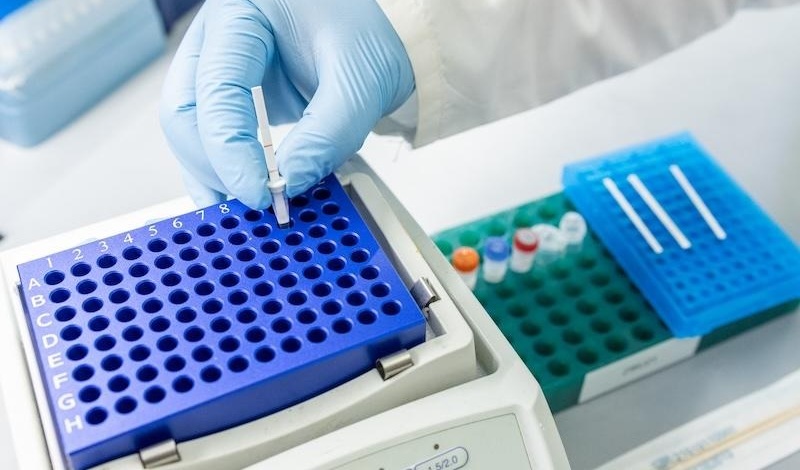
CRISPR-Based Tuberculosis Test Uses Mouth Swab to Simplify Screening
Tuberculosis remains the world’s deadliest infectious disease, with more than 10 million people falling ill annually and about 40% of cases going undiagnosed. Current testing depends on sputum samples,... Read more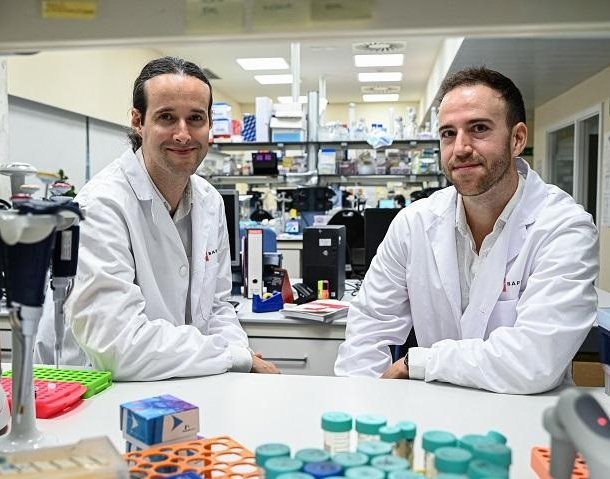
New DNA Methylation-Based Method Predicts Cancer Progression
Cancer often develops silently for years before diagnosis, making it difficult to trace its origins and predict its progression. Traditional approaches to studying cancer evolution have lacked the precision... Read moreHematology
view channel
Pioneering Model Measures Radiation Exposure in Blood for Precise Cancer Treatments
Scientists have long focused on protecting organs near tumors during radiotherapy, but blood — a vital, circulating tissue — has largely been excluded from dose calculations. Each blood cell passing through... Read more
Platelets Could Improve Early and Minimally Invasive Detection of Cancer
Platelets are widely recognized for their role in blood clotting and scab formation, but they also play a crucial role in immune defense by detecting pathogens and recruiting immune cells.... Read more
Portable and Disposable Device Obtains Platelet-Rich Plasma Without Complex Equipment
Platelet-rich plasma (PRP) plays a crucial role in regenerative medicine due to its ability to accelerate healing and repair tissue. However, obtaining PRP traditionally requires expensive centrifugation... Read moreImmunology
view channel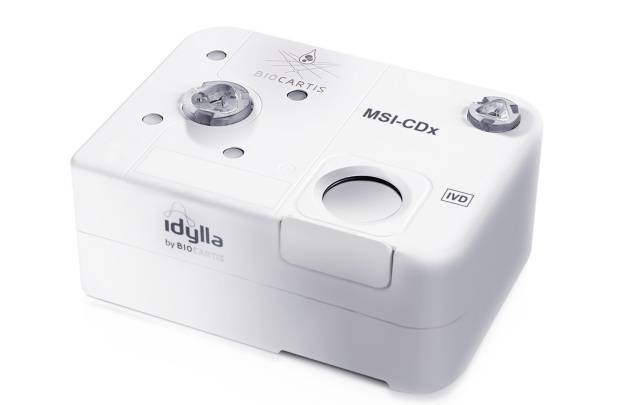
Companion Diagnostic Test for CRC Patients Identifies Eligible Treatment Population
Colorectal cancer remains one of the leading causes of cancer-related deaths worldwide, and identifying which patients will benefit most from targeted immunotherapies is critical. Existing diagnostic methods... Read more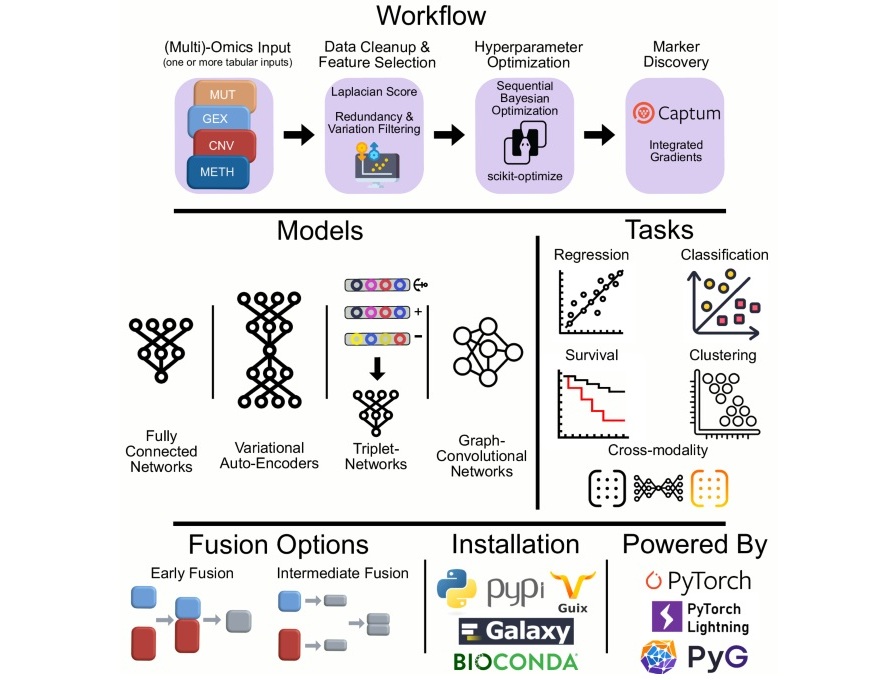
Novel Tool Uses Deep Learning for Precision Cancer Therapy
Nearly 50 new cancer therapies are approved each year, but selecting the right one for patients with highly individual tumor characteristics remains a major challenge. Physicians struggle to navigate the... Read more
Companion Diagnostic Test Identifies HER2-Ultralow Breast Cancer and Biliary Tract Cancer Patients
Breast cancer is the most common cancer in Europe, with more than 564,000 new cases and 145,000 deaths annually. Metastatic breast cancer is rising in younger populations and remains the leading cause... Read morePathology
view channel
New Microscope Promises to Speed Up Medical Diagnostics
Traditional microscopes are designed for flat samples, yet real-life specimens, such as tissue slides, are often curved or uneven. This mismatch forces researchers to rely on scanning methods or costly... Read more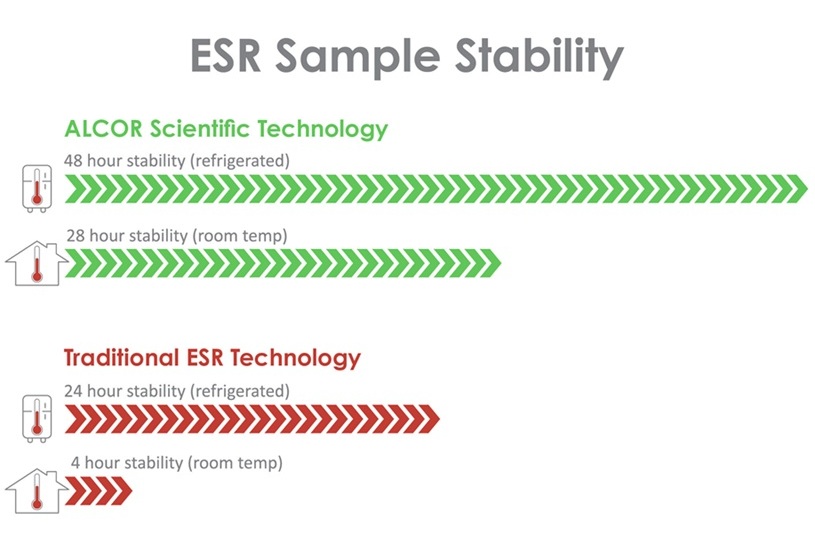
ESR Testing Breakthrough Extends Blood Sample Stability from 4 to 28 Hours
Erythrocyte sedimentation rate (ESR) is one of the most widely ordered blood tests worldwide, helping clinicians detect and monitor infections, autoimmune conditions, cancers, and other diseases.... Read moreAccurate Pathological Analysis Improves Treatment Outcomes for Adult Fibrosarcoma
Adult fibrosarcoma is a rare and highly aggressive malignancy that develops in connective tissue and often affects the limbs, trunk, or head and neck region. Diagnosis is complex because tumors can mimic... Read more
Clinicopathologic Study Supports Exclusion of Cervical Serous Carcinoma from WHO Classification
High-grade serous carcinoma is a rare diagnosis in cervical biopsies and can be difficult to distinguish from other tumor types. Cervical serous carcinoma is no longer recognized as a primary cervical... Read moreTechnology
view channel
Coral-Inspired Capsule Samples Hidden Bacteria from Small Intestine
The gut microbiome has been linked to conditions ranging from immune disorders to mental health, yet conventional stool tests often fail to capture bacterial populations in the small intestine.... Read more
Rapid Diagnostic Technology Utilizes Breath Samples to Detect Lower Respiratory Tract Infections
Respiratory tract infections (LRTIs) are leading causes of illness and death worldwide, particularly among vulnerable populations such as the elderly, young children, and those with compromised immune systems.... Read moreIndustry
view channel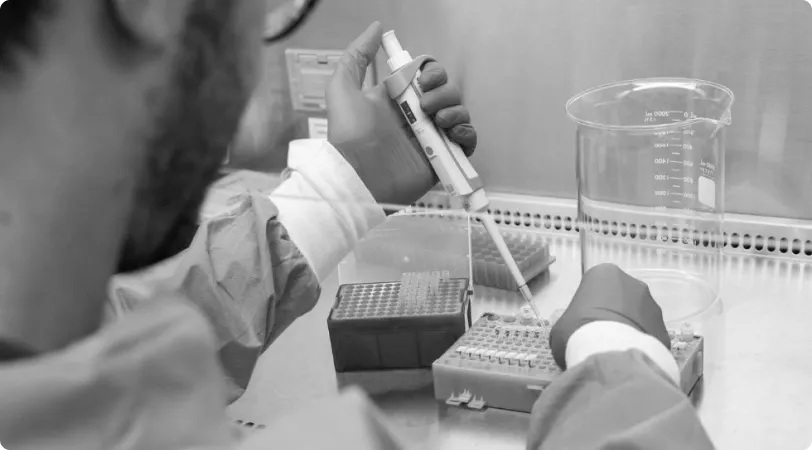
VedaBio Partners With Mammoth Biosciences to Expand CRISPR-Based Diagnostic Technologies
VedaBio (San Diego, CA, USA) has entered into a non-exclusive license agreement with Mammoth Biosciences (Brisbane, CA, USA) for the use of select CRISPR-based technologies in diagnostic applications.... Read more


















